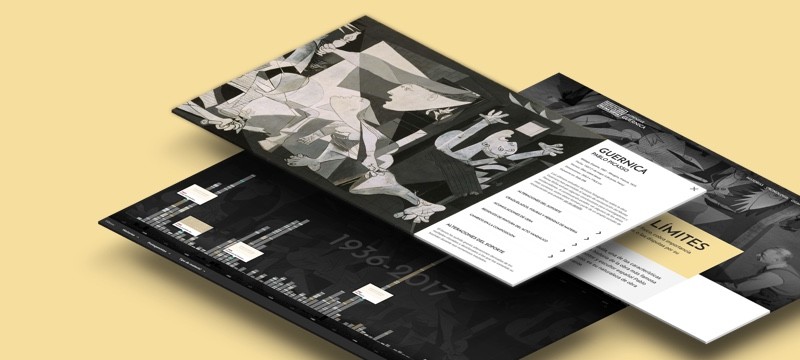Guernica Pictures by Picasso, Whitechapel Art Gallery, London, 1939
In January 1939, the East London Aid Spain Committee association, comprising a committee of trade unions from Stepney, a working-class area in the East End of London, and the Labour Party, organised the last of the exhibitions on Guernica and its preparatory drawings. At a time of national and international political tension, the aim was to raise a million pennies to go towards sending a boat of food supplies to the Spanish people. The show took place at the Whitechapel Art Gallery, in the same district, drawing 15,000 visitors in its first week
The exhibition Guernica at the Whitechapel Art Gallery was a huge event in the East End of London, for it represented more than just an opportunity for a public unaccustomed to enjoying modern art to see one of Picasso’s most recent and grandest works; Guernica was a renowned work of propaganda, its political nature extoled by the press at the time and defined as the proof, explanation and condemnation of the bombing of the Basque city by the German army. Moreover, the Civil War ran powerfully through the exhibition, which screened news about the front every afternoon via films and news broadcasts.
The opening set the stage to reflect the need and desire for the exhibition, turning it into an homage. It featured the presence of trade union leaders, Roland Penrose, involved in the whole tour of Guernica around England, and Major Clement Attlee, leader of the Labour Party, among others. The latter gave a speech appealing to England to help the Spanish people, an attempt to curb the menace of war looming, and there was also representation from the British section of the International Brigades, who showed up waving the flag of the “Attlee Battalion”.
The transience of the exhibition — only 15 days long – did not dim its huge success, “despite occurring in such a dark period”, as Penrose wrote to Picasso in a letter; Guernica and the dramatic situation of Spanish women and children had captured the imaginations of numerous Londoners, who responded in kind to the call for help. However, one month later, and from the other side of the Atlantic, preparations began for the Picasso retrospective at the Museum of Modern Art in New York at the end of 1939, for which Picasso requested the delivery of the painting to Paris.

![Weeping Woman [II] Weeping Woman [II]](/sites/default/files/styles/medium/public/documento/GUE-1959_0.jpg?itok=Yd6PJC9E)

![Composition Study [II]. Sketch for Guernica Composition Study [II]. Sketch for Guernica](/sites/default/files/styles/medium/public/documento/GUE-1905.jpg?itok=4rKXqm2o)
![Composition Study [V]. Sketch for Guernica Composition Study [V]. Sketch for Guernica](/sites/default/files/styles/medium/public/documento/GUE-1913.jpg?itok=NqSlqmHO)